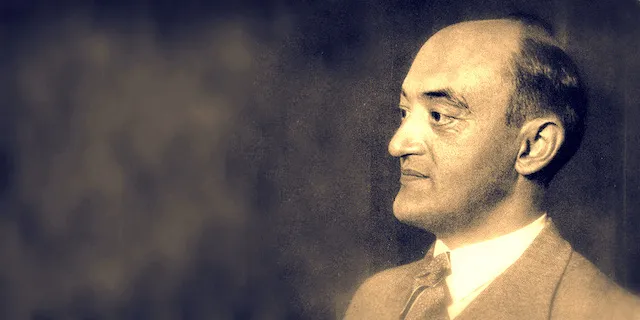Entrepreneurship: Innovation, Profit, and Creative Destruction
Introduction
Joseph Schumpeter, the man who termed the phrase “Creative Destruction”, is the topic of Dr. Russell Sobel’s book and lecture. This study in Schumpeter is a deep dive into the importance of entrepreneurship on a community and how it functions. To break it down into points, the lecture discusses the real definition of entrepreneurship, innovation versus invention, the role of profit/loss, and finally Creative Destruction. In this paper, I will be giving my interpretations and thoughts on the subject.
Entrepreneurship Defined
Entrepreneurs are not exclusive to the business world. Good or bad, there are people in every industry or setting who see a problem and decide to change it. As Schumpeter says, these people are agents of change. People who see the status quo and decide to alter it to a more “profitable” version of itself. For instance, war was fought where lines of soldiers marched forward toward each other, systematically. Someone saw this and saw that if soldiers performed more actions such as guerrilla tactics, they would gain the profit of not having many soldiers. As Dr. Sobel discussed, the best definition of entrepreneurship fits a two-part system: invention and profit. Though both will be discussed further into this paper, the connection helps reflect why Schumpeter chose to use the agent of change definition for entrepreneurs. Since, by definition, entrepreneurs do not operate solely in the business arena, it might be better to replace the word profit with benefit. Using the example above, someone saw the benefit of not standing in a line and marching forward. They were able to test this by noticing that fewer soldiers came back injured or dead if they chose to hide and fight. However, invention and benefit can only turn into entrepreneurship if its applicability is tested. As far as the war model goes, the most beneficial way of ending battles with little to no injuries to your soldiers would be having a hundred cannons fire at the opposing side. However, this idea is not applicable because at that time there was no way to haul some many cannons to the right place fast enough. In the business world, the battle is the market. The market will test ideas applicability, notifying the entrepreneur if they need go back and rethink their idea.
Invention Vs. Innovation
As agents of change, Entrepreneurs go a step further than just an inventor. An inventor’s job is to answer the question “Can it work?” An entrepreneur’s job is to answer the question “Can it make a profit?” Innovation is an invention plus profit. An inventor may be able to solve a problem, but an entrepreneur needs to figure out if this solution can sustain itself. A better way to say this is through the question “Does the value of the solution outweigh the value of the problem.” Using my cannon analogy from earlier, the value of the problem, the number of soldiers dying, outweighed the cannon solution’s value, which would end up as wasting a lot of manpower to carry these cannons around, along side leaving a lot of soldiers open. The cannon solution would probably result in more casualties than the original plan. Since entrepreneurs are trying to provide value to the consumer, they must pursue ideas that have a higher value count than the consumer’s original problem. No consumer will buy a service or product that creates more trouble than the original problems.
Profit and Loss
Entrepreneurs function on a carrot and stick policy. That is, entrepreneurs will only endure the stick if there is a profitable carrot at the end. Entrepreneurship is driven by reward. As Dr. Sobel explained, more innovation occurs if there is more reward. Innovation increases as the option for more rewards increases. However, the stick or loss still has a function. This tells entrepreneurs what is not profitable. If a company suffers a loss, they know the business endeavor they tried to pursue is not what the market it wants. Thus, they can reorganize and pursue another pathway for profit. Continuing with my comments, this is another occurrence of value outweighing value, but now it is on the side of the entrepreneur. Entrepreneurship is risky, and pursuing can be challenging at best. All these challenges have their own value. However, the profit that can be received by undergoing these challenges has a higher value than the challenges themselves, then entrepreneurs will be more likely to pursue this goal. This drive to pursue this goal only increases when the value of the reward increases.
Creative Destruction
Since innovation is created with invention and inventions are usually defined as something that has not existed before, entrepreneurs also have the title as agents of destruction. Joseph Schumpeter’s Creative Destruction describes this entrepreneurial destruction. Entrepreneurship stems from the idea of doing something better. That means the original “something” will be usually deemed as not as good. Being deemed not as good in a market setting means loss of profit and usually going out of business. Thus, the new industry destroys the old one, replacing it. There is a big fear of this creative destruction since it results in vast job loss, but Dr. Sobel said it best when he was answering one of the questions at the end of the lecture. An economy is always better to pursue innovation, than trying to stifle it so people won’t be harmed. In the end, people of an innovative economy are better off than people in stifled ones. As Dr. Sobel said, it is better to live in a nation that helps those who are harmed by creative destruction than one that tries to stop innovation to protect these people.
